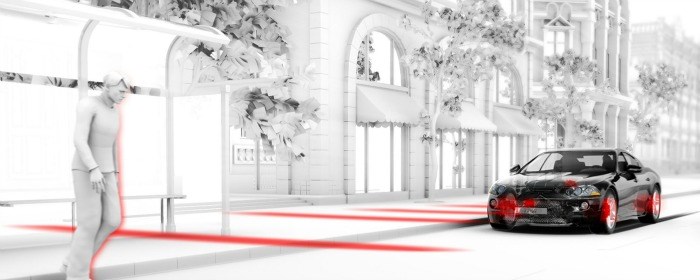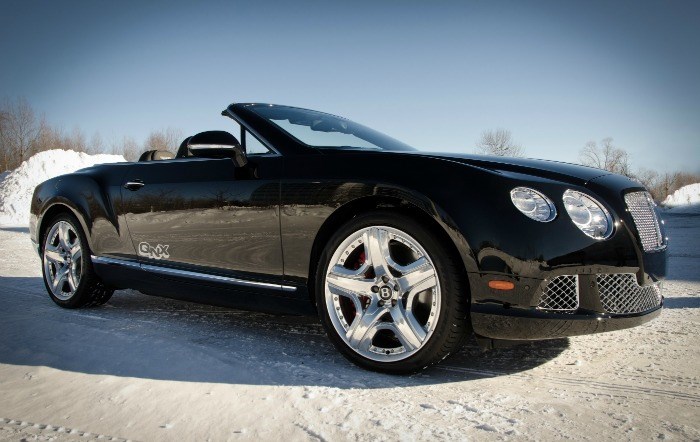Automotive Electronics & Changes in Product Development
While consumer electronics have long had a fast development cadence, these speeds are indicative of the pace that the auto industry must move in this space.
#Acura #electronics
At the 2013 Consumer Electronics Show, Andy Gryc, automotive product marketing manager at QNX Software Systems (qnx.com), issued something of a proclamation:
“The era of multi-year design cycles in car infotainment is over.”
Given QNX’s market position—the company claimed a hand in 40% of all U.S. car infotainment systems sold in 2011—it has enough street cred to provide a narrative on electronics’ trends. In announcing version 2.0 of QNX’s CAR application platform, Gryc said the company recently helped an automotive client cut that infotainment development cycle time to 14 months, instead of the more commonplace two- to three-year turnover.
But those design cycles for infotainment systems are no longer about integrating smartphone ports in the vehicle’s cabin or positioning analog systems on the dash. Increasingly, they’re now about enabling a driver to digitally design his or her own instrument cluster, navigation systems, and uploading voice-activated mobile apps—and doing it all as rapidly as, well, updating a smartphone app.
QNX demonstrated some of those possibilities on a concept multimedia system in a Bentley Continental GT convertible. They constructed the system using the HTML5-based QNX CAR 2.0. The product allows various mobile hardware and software designers to test and debug their creations before they’re integrated. In the case of the Bentley, the open environment spawned veritable buffet of third-party technology. The center stack includes a Texas Instruments (ti.com) digital light projection display, a 3D navigation system from Elektrobit (elektrobit.com), a voice recognition technology called “Truly Handsfree” from Sensory (sensoryinc.com) coupled with AT&T’s (att.com) “Watson” that manages the media player and navigation system, a video conferencing feature; a music and video system powered by Shazam (shazam.com) with Pandora (Pandora.com); and a Web-enabled app that monitors the location and condition of the vehicle, such as tire pressure and fluid levels, from any browser using HTML5.
The CAR application platform 2.0 is out in mid-2013 and Delphi Automotive LLC (delphi.com) has already selected it to underpin its next-generation infotainment systems. QNX of course isn’t alone in the multi-player development approach to vehicle technology. 2012 saw much closer cohabitation among app developers, telecommunications companies, suppliers, and OEMS. For instance:
• Audi teamed up with T-Mobile (t-mobile.com) to convert its cars into wandering Wi-Fi hotspots.
• Chrysler worked with Sprint (sprint.com) for its Uconnnect Access system premiering in the Ram 1500 pickup and SRT Viper, which among other features, lets occupants compose text messages by speaking them.
• Volvo announced it will use Ericsson’s (ericsson.com) Connected Vehicle Cloud, allowing drivers and passengers to connect with a variety of apps. One of those apps will include the Swedish music service Spotify (spotify.com) , according to a report in Wired Magazine.
• Honda in January announced it would partner with Apple (apple.com) to bring the voice activated Siri online helper to the 2013 Accord, Acura RDX and ILX. Using the car’s microphone, owners with an iOS 6 iPhone will be able to connect with Siri later this year. (A few months earlier, Chevrolet said Siri would be available in certain trims of the Spark and Sonic).
• Verizon’s (verizon.com) purchase of Hughes Telematics over the summer (potentially) showed the first fruits of that collaboration in a VIA Motors extended-range electric cargo van shown at the North American International Auto Show. Instead of a traditional dashboard, the vehicle came with a removable tablet that responds to voice prompts and route updates.
But Ford may have gone the furthest in proving its dedication to an open-source cabin. The company pulled back the curtain on its Developer Program, inviting code jockeys to create voice-enabled apps using the company’s SYNC AppLink system programming interface. Ford has been beta testing the project with a group of developers who have churned out more than 30 apps compatible with Apple and Android devices. But now Ford has swung the doors wide, working with “developers ranging from a two-man startup at Roximity (roximity.com) to large organizations like National Public Radio and Major League Baseball,” said Julius Marchwicki, global product manager for Ford SYNC AppLink.
Of course, just because a developer can build a snappy app doesn’t mean it’s going to get into the car. Ford engineers still review and approve all apps.
“Our focus is to enhance the driving experience by minimizing the distractions caused by hand-held usage of smartphones while driving,” Marchwicki said. “We know consumers are using apps such as music and navigation while driving; therefore, by making AppLink available to developers, we can help ensure relevant apps can now be voice-controlled.”
But Thilo Koslowski, vice president and lead automotive analyst at Gartner Inc. (gartner.com), said he doesn’t necessarily expect many OEMs to follow Ford’s lead. Over time, he thinks more automakers will look to be less involved in micromanaging infotainment systems. Instead, they’ll be searching the most flexible hardware available and let outside players largely color it with technology.
“What we’re seeing the vehicle itself is becoming more of a consumer electronics product than it ever has in the past,” he said. “What you will see going forward is that infotainment systems will be decoupled from the other systems in the vehicle. That will allow the auto industry to get away from these vicious [design] cycles.”
In the meantime, it’s very much a “Wild West” scene, with small players and major telecoms vying for the OEMs’ attention, he said. And some of the losers might be traditional Tier 1 suppliers.
“It means they have to change their business model; they have to be much more nimble,” he said.
A similar scenario is playing out in the safety systems realm. ZF TRW Active and Passive Safety Technology Division (trw.com) estimates that electronics are nearing 50% of a vehicle’s cost, double from a decade ago. That cost has been pushed along, not just by our insatiable data needs, but by various government regulations to increase safety. TRW sees three trends, including the mainstreaming of crash avoidance, more affordable radar and camera systems, and a push for open architecture systems as the key drivers of electronics growth.
Peter Lake, executive vice president-sales & business development for TRW, notes the World Health Organization and the European Commission have set ambitious targets to drastically reduce the global number of road fatalities by 2020. To meet them, TRW plans to start production of its Safety Domain electronic control unit later this year with a yet-to-be-named major European vehicle manufacturer. The device was created to integrate multiple functions—eliminating the need for multiple other controllers—under an open platform, known as the AUTOSAR (AUTomotive Open System ARchitecture) architecture. Among the systems orchestrated inside the controller are chassis, suspension and driver assistance control functions. The ECU has the processing capacity and flexibility to include software from vehicle manufacturers and third party suppliers. In short, the systems can speak with one another, but without fluency in one another’s software language.
“Without knowing the code, we can integrate the software in an ‘open architecture’ system housed within the controller,” said Hans-Gerd Krekels, engineering director, global integrated electronics. “These are in high demand as vehicle manufacturers are increasingly writing their own software and asking suppliers to manage the integration – not just for active safety systems, but also for airbags, steering and braking. This has grown enormously and we expect to see exponential growth in this area.”
RELATED CONTENT
-
NACTOY Finalists Announced
The finalists for the North American Car, Utility and Truck of the Year (NACTOY) awards were announced at the Los Angeles Auto Show today, and because the choices are essentially based on choices predicated on design and engineering (after all, as the jurors drive the vehicles, it isn’t an issue of sales or marketing), the selections of the three finalists in each category can be considered among the best in class when it comes to those two functions.
-
2021 Honda Accord Hybrid Touring
Where efficiency meets surprising luxury
-
Autoline After Hours in NYC
The 2016 New York International Auto Show is open to the public right now, but last week it was opened just to the press, where several vehicles were introduced, like the 2017 Prius Prime, a plug-in variant of the non-plug-in Prius hybrid.




